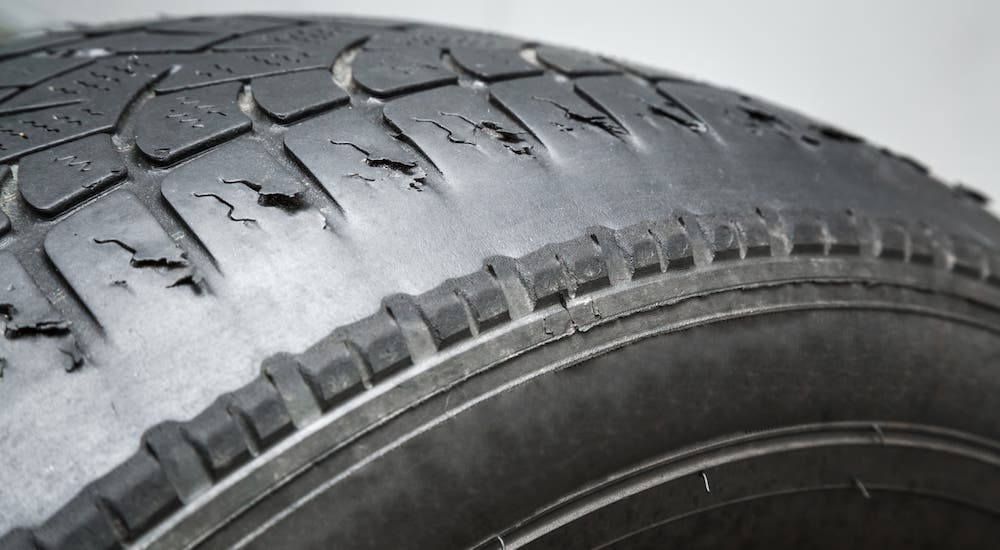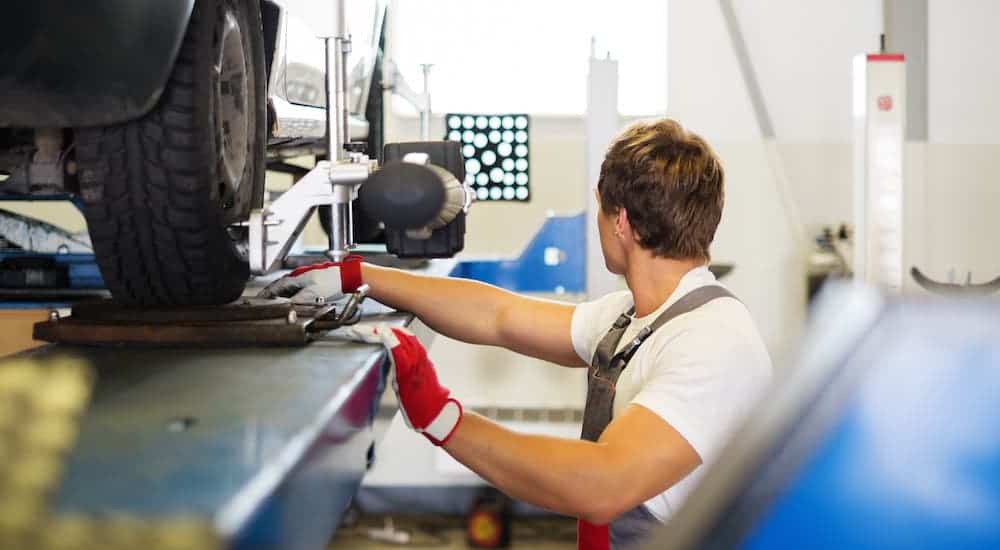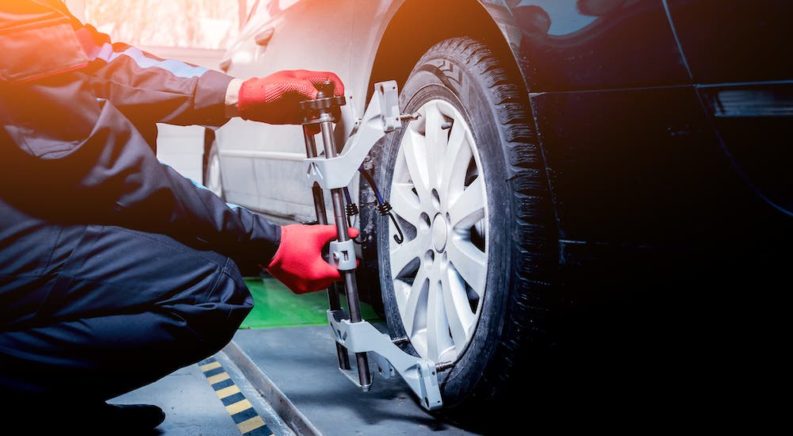At some point or another, while performing your own vehicle maintenance, you’re going to ask yourself, “Can I do my own alignment?” The short answer is: yes; however, it depends on your vehicle. Today, I’m going to take you through everything you need to know about your vehicle’s alignment, or at least everything you need to know to get started. In general, unless you’re very confident with car maintenance and have the right information about your specific vehicle, it’s best to head to your local tire shop to get your alignment handled.
Remember, this is car care 101, not 201 – so I’m not going to tell you how to do your own vehicle alignment at home. The reason I’m not going to do that is simple: it really depends on your vehicle and the specific way it needs to be maintained. If that doesn’t entirely make sense right now, don’t worry, it will. So let’s have a look at what alignment means when it comes to your vehicle, what determines your alignment, how to tell if your alignment is out of whack, and what you need to know about doing your own car alignment at home.
What is Car Alignment?
Let’s start simply: your car’s alignment refers to how well your vehicle’s suspension keeps the wheels and tires properly aligned so that your car goes straight. Although the suspension has different parts to it, in general, we’re talking about all of them that connect the wheels to the frame of your vehicle. The suspension is what allows you to steer your car by shifting the wheels as you shift the steering wheel, and also keeps you from feeling every bump and dip in the road like they were right under your seat.
When your vehicle is properly aligned, it should go in a straight line on a flat, even road, without any effort from you. In other words, if you’re on a flat, even road and take your hands off the steering wheel, it should go in a straight line without veering off in either direction. This means that your suspension is properly aligned so that the wheels are parallel and your tires are making proper contact with the road.

How Can I Tell if My Alignment is Off?
Fortunately, there are some pretty simple warning signs to let you know if your alignment is off, which you’ll typically notice while driving on a regular basis. First and foremost, if your vehicle wants to veer to the left or right while you drive, either violently or just casually, then that often means you have an issue with your suspension and alignment. Similarly, if you notice that you need to make constant adjustments to go straight – particularly on a flat, even road – then your alignment is probably off.
You might not notice that you’re making adjustments to offset your alignment, so pay attention to your steering wheel. If you’re driving in a straight line, but your wheel is off-center, then you’re compensating for your alignment, and you don’t even realize it. You can also tell that you have an issue with your alignment by looking at your tires, particularly how they’re worn.
If your alignment is set properly, then your tires will wear down in a generally even way, across all four tires front and back. When you look at your tires, if you notice uneven wear, particularly excess wear on the inside or outside of the tires, then this often means your alignment is off. One of the most important reasons to have your alignment set properly is to keep your tires in good condition longer – so you don’t have to change them too often.
What are the Main Aspects of Alignment?
There are four major aspects to your vehicle’s alignment, and they all have to do with your suspension and how it connects to your four wheels. These four aspects are:
- Camber – The camber of your wheels and tires refers to how they tilt, either inward or outward, when looking at your vehicle head-on from the front or back. When you look at your vehicle in this way, if the tops of the tires lean inward, this is called “negative camber;” on the other hand, if the tops of your tires lean outward, this is “positive camber.” In general, your tires should have a very slight amount of negative camber to them, leaning a little bit inward, to keep your tires in optimal contact with the road when cornering.
- Toe – The toe of your tires refers to how they are positioned if you were looking down on your vehicle from overhead. It deals with the two tires on an axle, so either the two front or two rear tires. “Toe-in” means that your tires are both leaning inward toward the center of your vehicle, while “toe-out” indicates that your tires are leaning outward away from the center of your car. If your car has front-wheel drive, then your front tires are probably set slightly toe-out, while rear-wheel drive vehicles usually have front tires set slightly toe-in. This compensates for natural pull in or out due to acceleration.
- Caster – This is the aspect you probably need to worry about the least since you can’t adjust it much. The caster of your suspension indicates how well the steering axis of your axle is properly aligned to straight up and down. It can be on the centerline, or angled forward for a negative caster, or backward for a positive caster. Proper alignment usually means a slight positive caster to help with stability at high speeds.
- Ride Height – Finally, ride height refers to the distance between the road below you and the bottom of your vehicle’s frame. This is important not only to ensure your vehicle has proper clearance but also with regard to the center of gravity for your car. Adjustments to ride height, like installation of a lift kit on a truck, should involve checking alignment and can require suspension adjustments for safe driving.
If your alignment is off, it could be due to an issue with any of these four aspects of your vehicle’s suspension. A mechanic typically looks at all four of them when doing an alignment on your vehicle to see what might be off.

Can I Do My Own Alignment?
While you can make some adjustments to your alignment yourself, what you can do really depends a lot on what you’re comfortable with. You really can’t adjust the caster of your axle yourself, as that’s not something typically designed for easy changes. The simplest (relatively) adjustment to make when it comes to your vehicle’s alignment is whether your wheels are toe-in or toe-out.
Adjusting this can be fairly simple. You can use a couple of tape measures and some lengths of wood or pipe to do it. Although there are also two-wheel alignment systems and kits sold by several different manufacturers to help you make the process more precise. The reason I’m not going to tell you how to do it, however, is that it really depends on your vehicle and its suspension. You need to look at your owner’s manual and do some research online regarding your specific make and model to see how you can adjust the tire rods on your suspension to shift your wheels slightly in or out without causing damage to your car.
Just make sure you really know what you’re doing, as messing up the alignment of your vehicle can be potentially dangerous and cause a collision. It’s often best to let a certified tire shop or service center handle your vehicle’s alignment, at least until you know exactly how to do it. While there are plenty of ways to DIY repairs on your car, it is usually easier to let a professional with all of the right tools and knowledge take care of your alignment. However, if you have a good idea of what you are doing and how exactly to do it on your specific vehicle, then yes, you can do some wheel alignment adjustments yourself.

